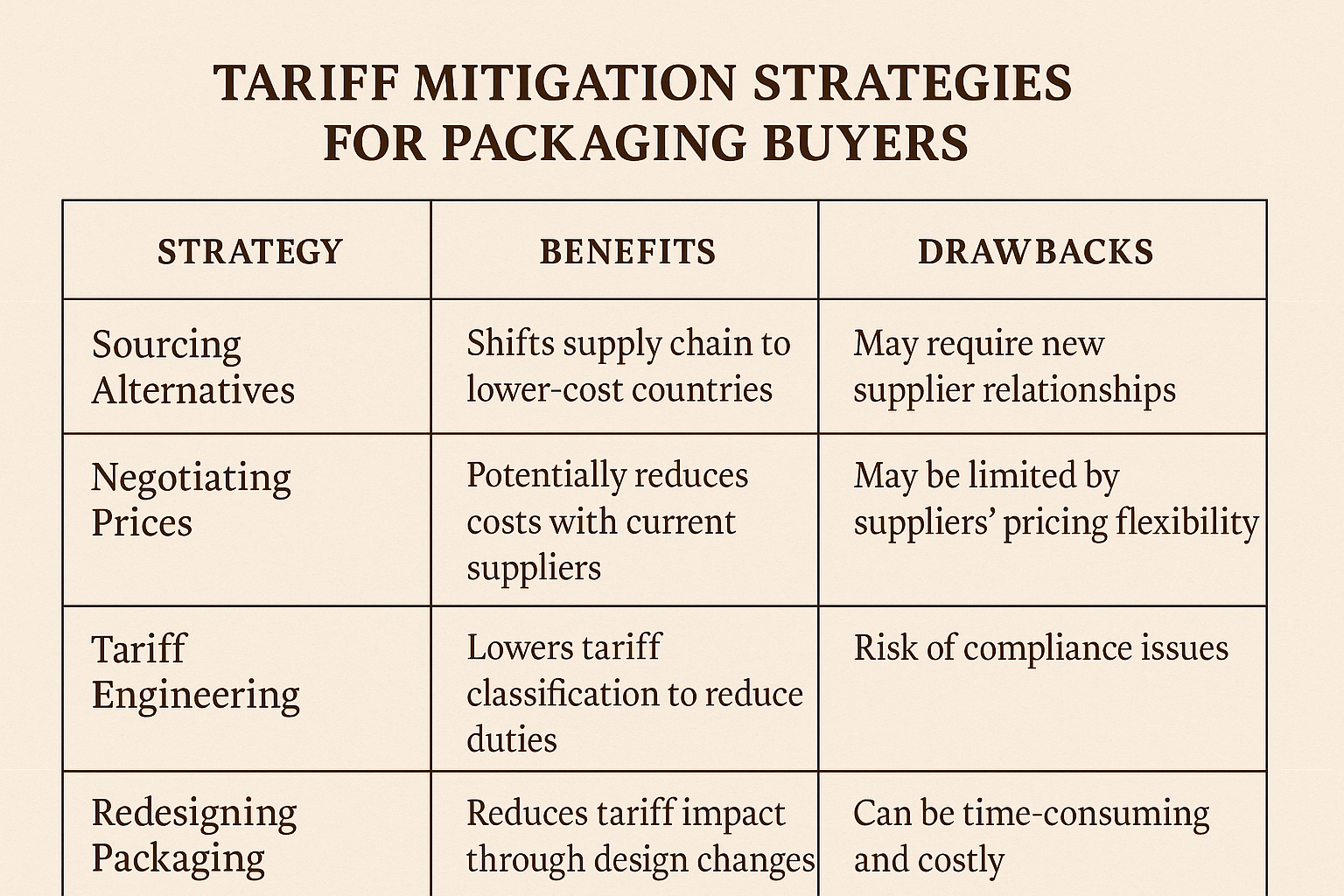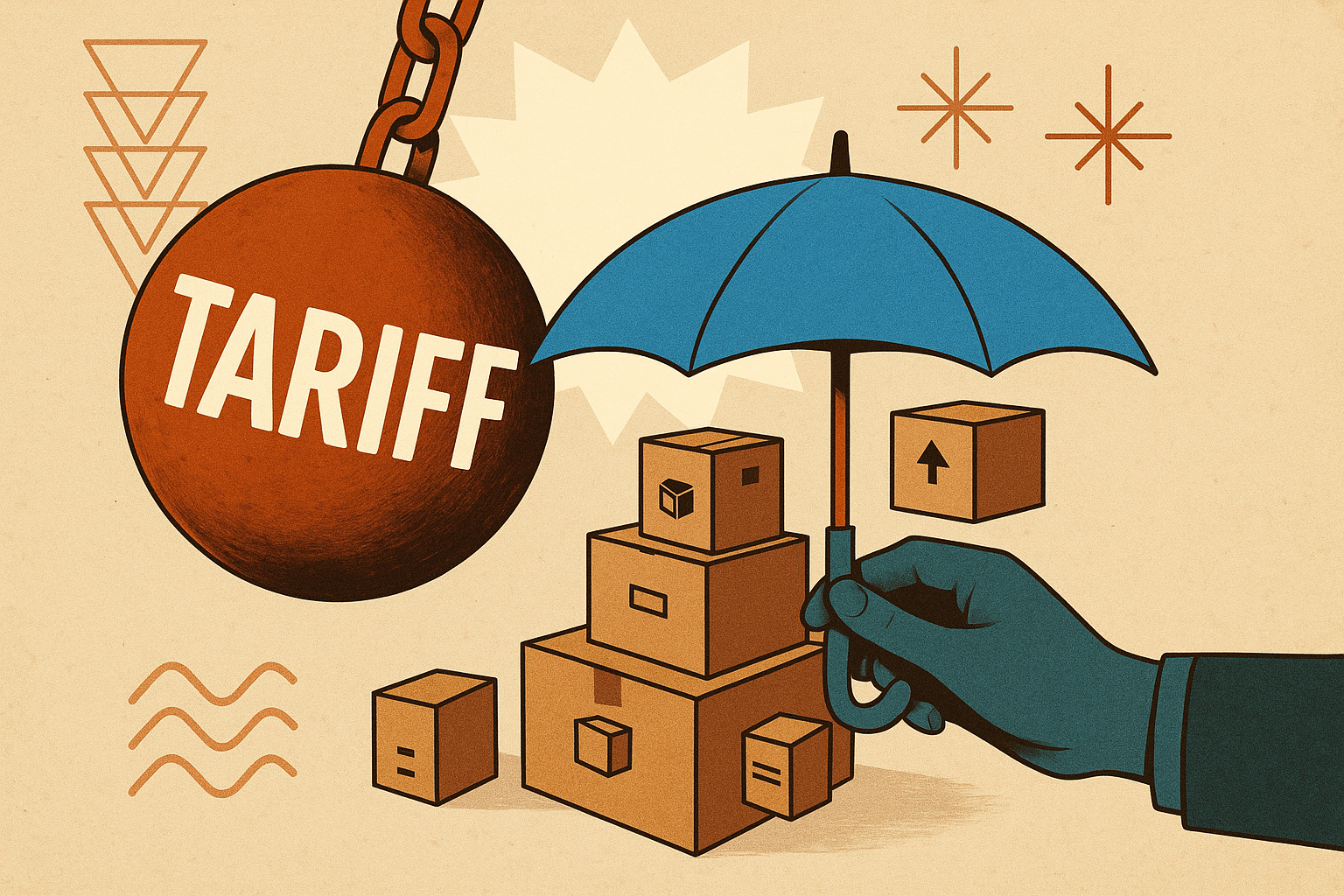Avoiding Losses from Packaging Tariffs: A Guide
The latest wave of trade duties is disrupting the packaging sector, affecting everything from raw material pricing to the stability of logistics networks. For American businesses that depend on customized packaging to distribute their goods, this shift brings serious obstacles. So, how can companies adjust to the changing global trade environment and reduce economic pressure?
This article explores how import taxes influence your operations and provides practical solutions to help your brand stay strong and thrive in a challenging market.
How Tariffs Are Reshaping the Packaging Landscape
Escalating Costs for Packaging
The April 2025 implementation of a steep 145% duty on goods from China has deeply disrupted the packaging landscape. Smaller enterprises that lean heavily on affordable Chinese production are now facing abrupt cost increases. Because U.S. importers are responsible for covering these added fees, the financial burden is felt almost instantly.
Even companies purchasing from within the U.S. aren't entirely immune. A large number of American packaging providers still rely on foreign materials or outsourced manufacturing—especially from China. As these elevated tariffs drive up operational costs, suppliers often transfer the added expense to clients, placing the strain squarely on your bottom line.

Supply Chain Bottlenecks and Limited Options
Trade barriers are throwing international supply networks into disarray, causing setbacks in obtaining essential inputs and shipping out completed packaging products. These hiccups can delay product launches and risk harming both revenue and customer trust.
In response to limited stock and rising costs, certain vendors are trimming their catalogs, offering fewer tailored solutions for brands. Moreover, the economic pressure from rising import fees is forcing some packaging providers to downsize or shut down altogether, making it more difficult to access high-quality, customized packaging.
Dampened Consumer Spending
As packaging expenses climb, many companies are left with little choice but to raise their product prices—risking a decline in customer interest. In a fragile economy, further strained by international trade disputes, shoppers may shift their focus to basic necessities rather than higher-end items with specialized packaging, reducing the effectiveness and value of your packaging spend.

Proactive Steps to Mitigate Tariff Challenges
1. Reassess Your Packaging Partners
If your packaging is sourced from China or vendors that depend heavily on Chinese production, now is the time to reassess your procurement approach.
Look for partners with manufacturing capabilities spread across different regions—such as Southeast Asia, North America, or Europe. This geographic variety helps minimize your vulnerability to sudden tariff shifts. Beyond just cost, choose suppliers who offer clear communication and flexible strategies for handling trade-related challenges. Consider asking:
What steps are they taking to offset tariff-related costs?
Do they have contingency plans in case of supply chain setbacks?
Aligning with a stable, forward-thinking supplier gives your business a stronger footing amid ongoing trade volatility.
2. Strengthen Supplier Relationships
Working hand-in-hand with your packaging vendor—whether a current partner or a new one—can be instrumental in controlling the rising expenses caused by tariffs.
Seek to arrange adaptable agreements, like delayed payments or price reductions on large-volume purchases, to alleviate budget constraints. Since many suppliers face similar market difficulties, maintaining transparent dialogue often uncovers win-win opportunities. Building a reliable relationship grounded in trust enables both sides to succeed despite unpredictable market conditions.
3. Streamline Packaging for Cost Savings
? Collaborate with your packaging team to create designs that balance cost-effectiveness and brand quality. Consider these strategies:
? Reduce Material Usage
Choose lighter or thinner materials to decrease costs and reduce tariff exposure, while ensuring product safety through comprehensive quality checks.
? Right-Sized Packaging
Design packages to eliminate unnecessary empty space, lowering material consumption and shipping costs.
? Streamlined Designs
Simplify packaging by reducing the number of components or colors, which helps cut manufacturing expenses and enhances sustainability.
? Use Alternative Resources
Opt for domestically sourced or tariff-exempt materials, such as recycled options, to manage costs and appeal to eco-conscious consumers.
⚙️ Long-Term Savings
While these changes may require initial research and testing, they can deliver significant cost reductions without compromising your brand’s integrity.

4. Incorporate Tariffs into Strategic Planning
Increasing product prices to cover tariff expenses can risk losing customers, so a carefully balanced strategy is essential. Incorporate possible tariff changes into your cost calculations, profit expectations, and future financial plans.
Utilize advanced AI-powered prediction systems to forecast customer demand and track tariff developments, allowing for smarter purchasing decisions and preventing inventory gaps. Being proactive ensures your company remains flexible and financially healthy amid trade challenges.

Partner with GPLPAK for Tariff-Resilient Packaging
At GPLPAK, we empower businesses to overcome tariff challenges with tailored packaging solutions that prioritize cost efficiency and reliability:
Worldwide Partner Network: We link you with producers in various locations to reduce exposure to tariffs while ensuring your standards and cost requirements are met.
Comprehensive Shipping Solutions: We manage everything from regulatory paperwork to final shipment, ensuring your supply chain operates smoothly and with full visibility.
Affordable Packaging Enhancement: We fine-tune your packaging details to lower expenses on materials and tariffs while preserving your brand’s core values.
Active Duty Surveillance: We observe changes in trade regulations and track cargo progress to ensure you stay updated and ready.
Open Dialogue: Receive detailed pricing explanations and frequent progress reports to build trust throughout the entire process.
In the current intricate landscape of international trade, being agile is essential. Companies that collaborate with experienced, adaptable suppliers and refine their packaging approaches can transform obstacles into advantages.
Want to safeguard your brand against tariff impacts? Reach out to GPLPAK’s packaging specialists now for tailored, tariff-conscious strategies.



